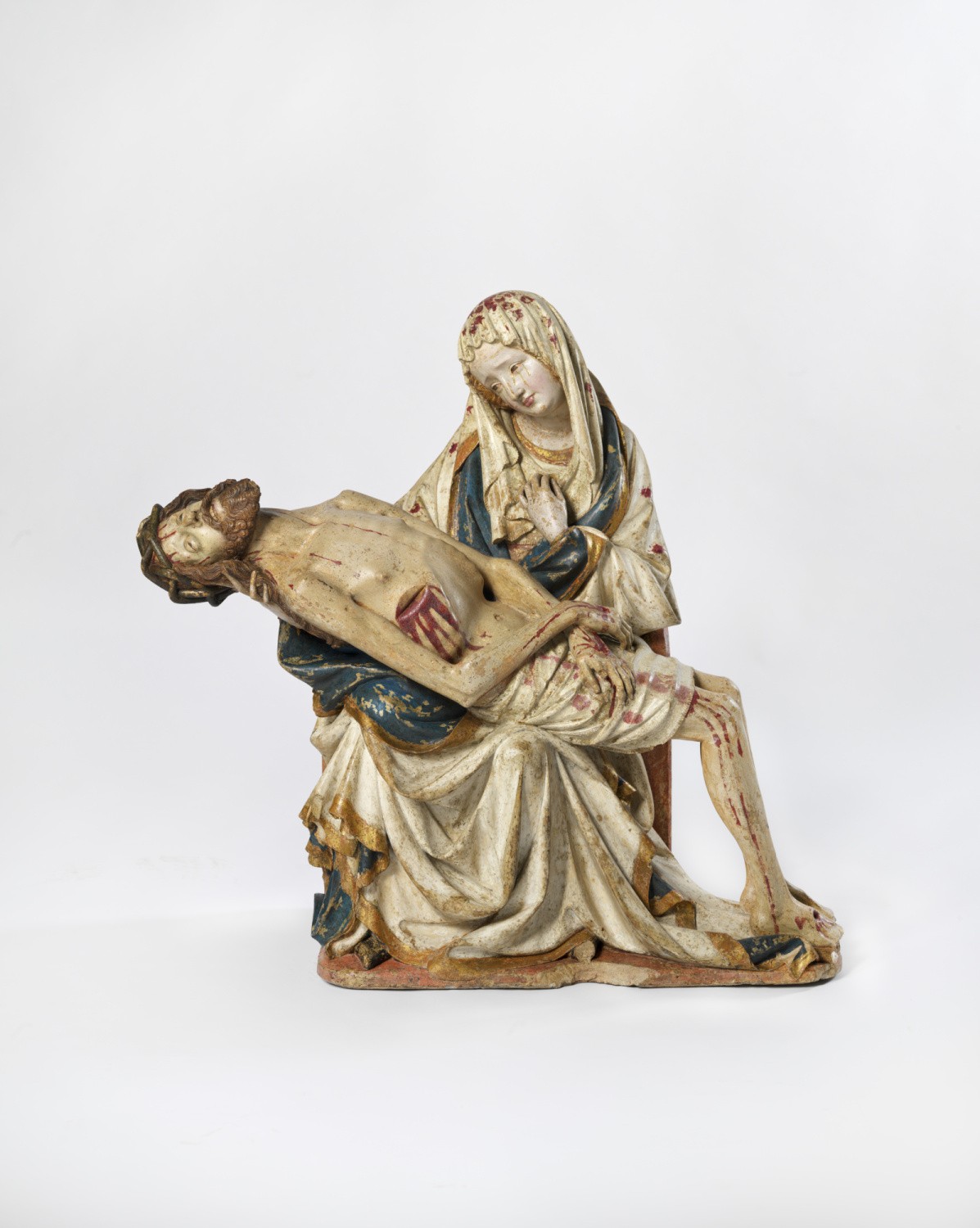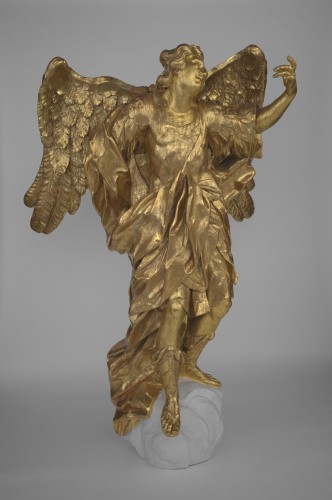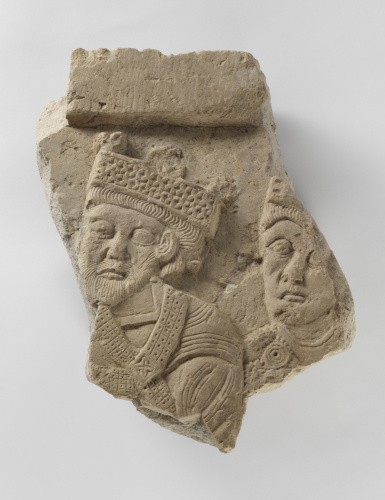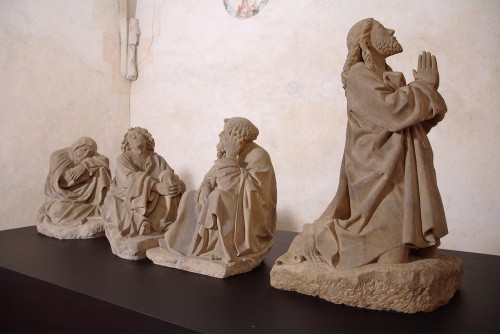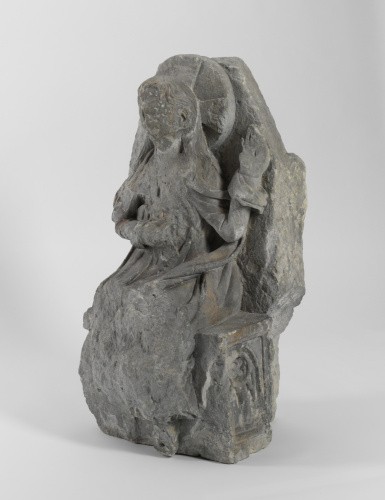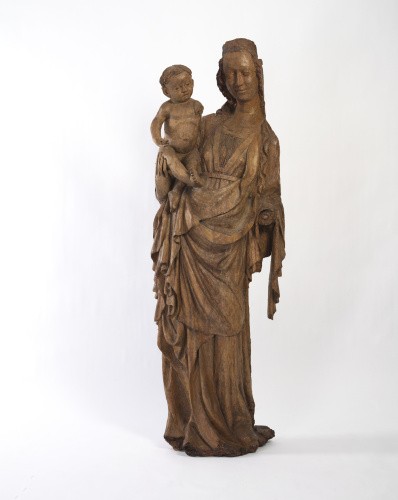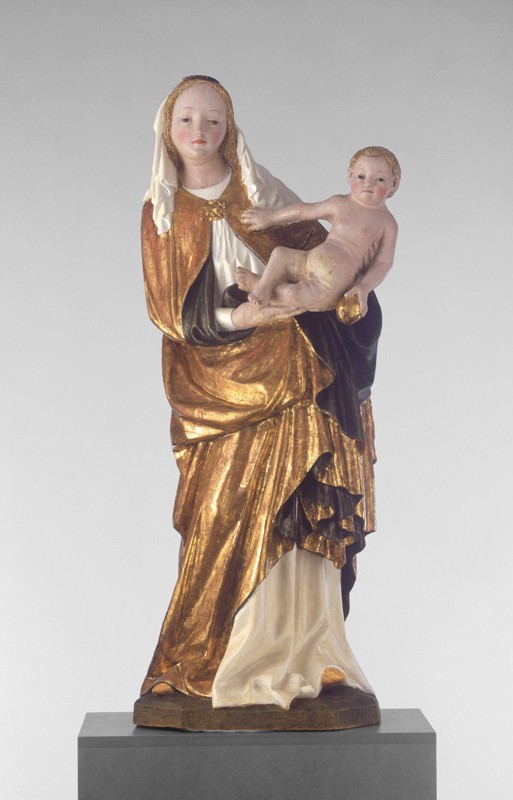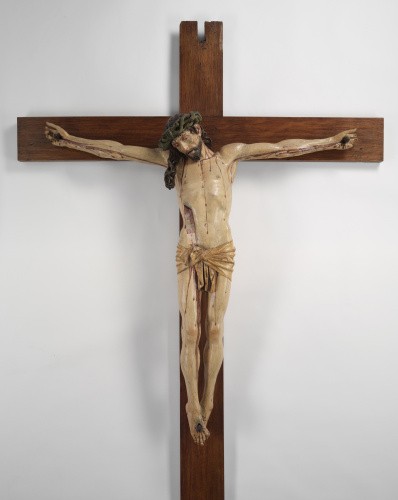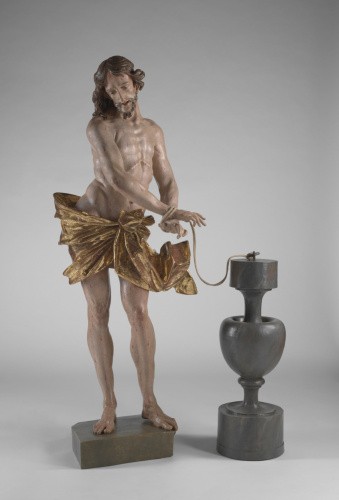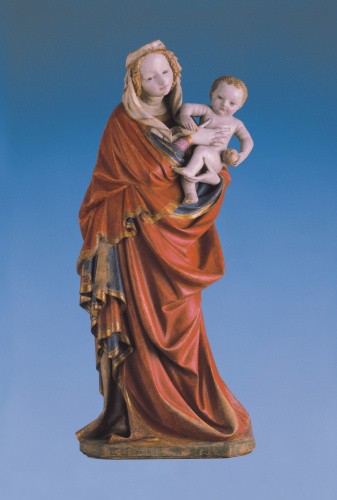A Bohemian or Moravian Sculptor
A Bohemian or Moravian Sculptor
The Pietà from the collection of Canon Křivák, around 1390–1400
argillite, polychromy; height 74 cm, Olomouc, St. Wenceslas Cathedral, loaned for the permanent exhbition at the Olomouc Archdiocesan Museum
The Pietà from the collection of canon Křivák is one of the best Pietàs in the Beautiful Style that have been preserved in Europe. It depicts the Virgin Mary sitting on a throne with Christ lying on his mothers left knee and held by her left hand. Jesus is lying on Marys lap in a diagonal position, his arms crossed at hip level. His body bears signs of the suffering he has experienced. From under the crown of thorns on his brow rivulets of blood are flowing onto his chest. His half-open eyes and mouth remind us of the moment of his last exhalation on the cross. There is a wound in his right side from which the blood is welling and running over the white cloth that shrouds his loin and onto his feet. The Virgin Mary is wrapped in a white cloak with blue lining, her head covered by a white veil heavily stained with Christs blood. Drops of blood also stained Marys cloak on the shoulders when she was standing below the cross. Marys right hand is gently supporting her sons body, while her left hand touches the veil on her chest in a gesture of compassion. Marys head is compassionately leaning towards Christs face. Her face, framed by golden locks of hair, is that of a fair young maiden. Her expression is of deep sorrow and that is accentuated by her eyes that are red from weeping. Flowing from her eyes are bloody tears, painted red with vermillion. Analysis of the stone has indicated that the Pietà was apparently created in a Prague workshop, in which sculptures of this type were made for both domestic and foreign customers. Evidence of this can be found in the Pietà from the Upper-Bavarian Seeon monastery (Bayerisches Nationalmuseum München), as it is stylistically very similar to Křiváks Pietà. The masterful work done on the gaize is supplemented with polychromy to achieve the most realistic effect. On closer view one can find such details as shallow grooves in the veils shrouding Christs loin and in the Virgin Marys hair. These give the impression of the real structure of an actual fabric. Another detail is Christs blood in several forms; flowing from the wound in his side, seeping through the white veil and even in the glistening tears of the Virgin Mary made of resin painted with vermillion. The inspiration for these types of figures comes from the paintings by the Master of the Třeboň Altarpiece (in particular the Madonna of Roudnice and Entombment from the Třeboň Altarpiece). Křiváks Pietà is likely one of the first sculptures with this theme that depicted the Virgin Mary as a young girl, unlike most of the Pietàs from that time, which continued the tradition of Parlers workshop and showed the Mother of God at her actual age. In this sense, Křiváks Pietà is the same in style as the beautiful Madonna. In the subsequent decades the sculptures of the Beautiful Style followed the same direction. The Virgin Mary is shown not only as a grieving mother, but also as the Church presenting Christs body to the faithful for adoration.
Jana Hrbáčová


